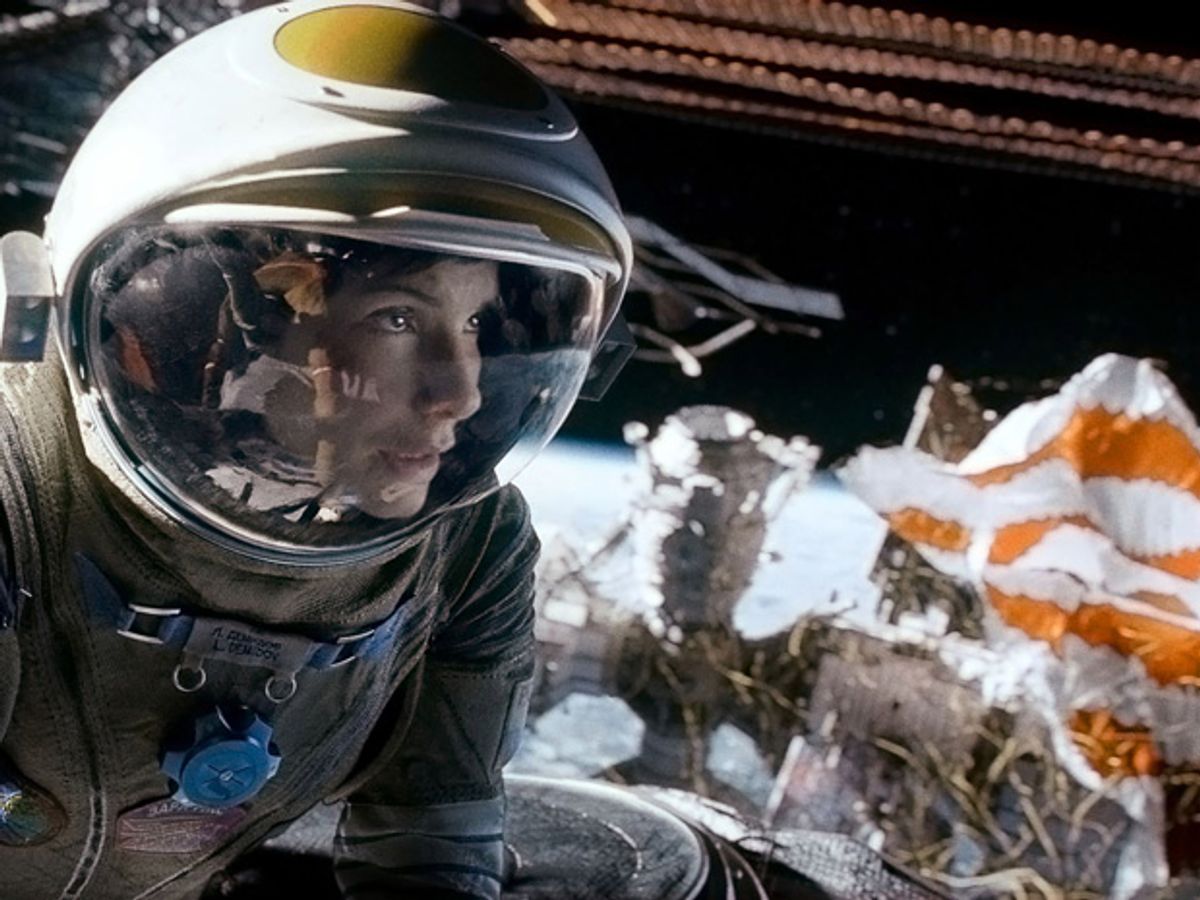In the film Gravity, which opened in theaters today, a missile strike on a Russian satellite sets off a cascading space debris disaster that unfolds with shocking speed. The science fiction tale plays out in exaggerated fashion to heighten the human drama of two space-walking astronauts, but its premise is based on a real-life scenario first described by a NASA scientist in 1978.
The Kessler syndrome imagines a situation where the thousands of pieces of space junk in Earth orbit begin to multiply as accidental collisions create even more debris over time. In 2012, Donald Kessler and Darren McKnight argued in IEEE Spectrum that the sheer density of space debris leftover from decades of spacecraft and satellite launches, explosions and collisions had already reached a mathematical tipping point that would enable a runaway debris scenario.
Space debris already poses a very real danger to both astronauts and satellites, even when it's not rapidly multiplying like the sped-up Kessler syndrome envisioned in "Gravity." The ever-growing cloud of space junk has occasionally forced the International Space Station to dodge out of the way and even go into emergency evacuation mode. It also poses a danger for satellites, as was graphically illustrated in a 2009 collision between an active Iridium communications satellite and a defunct Russian satellite.
The space debris problem will only increase in risk over the next 20 to 30 years as the Kessler syndrome unfolds in low Earth orbit, said Tom Jones, a former NASA astronaut. He spoke during a Q&A session that followed a preview screening of "Gravity" hosted by Popular Mechanics on Thursday.
Even the missile strike on a satellite in the opening moments of "Gravity" drew inspiration from a real-life incident. China demonstrated its anti-satellite (ASAT) capabilities by destroying one of its own defunct weather satellites in 2007—an event that greatly increased the risk from space debris. A piece of space junk from the Chinese ASAT test even struck and damaged a Russian satellite in January.
Spacefaring nations have started to recognize the threat. The U.S. has already begun planning spacecraft and satellite launches so that any leftover debris or defunct satellites end their lives by burning up in the Earth's atmosphere, rather than remaining in orbit as an ongoing danger. Several experimental projects also aim to begin the long cleanup process for space junk by using robotic "janitor" spacecraft to take the pieces down or Earth-based lasers to help de-orbit space junk, according to SPACE.com.
Perhaps the best way to ensure that the "Gravity" disaster scenario remains just a Hollywood fantasy is to emphasize how all spacefaring nations have a stake in keeping Earth orbit tidy. China will likely think twice before attempting another ASAT test as it continues launching its own taikonauts into Earth orbit and perhaps someday assembles its own fully-operational space station. (The Chinese launched an experimental space lab module called Tiangong-1 in 2011.)
"You do want to be a good citizen in space," Jones said. "Nations cooperating in space aren't going to soil the nest with an ASAT test."
Photo: Warner Bros.
Jeremy Hsu has been working as a science and technology journalist in New York City since 2008. He has written on subjects as diverse as supercomputing and wearable electronics for IEEE Spectrum. When he’s not trying to wrap his head around the latest quantum computing news for Spectrum, he also contributes to a variety of publications such as Scientific American, Discover, Popular Science, and others. He is a graduate of New York University’s Science, Health & Environmental Reporting Program.



